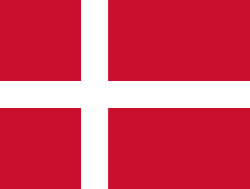Bengálská súba
| Bengalská súba সুবাহ বাংলা صوبه بنگاله
| |||||||||||||||||||||
geografie
| |||||||||||||||||||||
| obyvatelstvo | |||||||||||||||||||||
národnostní složení: | |||||||||||||||||||||
| státní útvar | |||||||||||||||||||||
měna: | taka (tanka) | ||||||||||||||||||||
vznik: | |||||||||||||||||||||
zánik: | |||||||||||||||||||||
| státní útvary a území | |||||||||||||||||||||
| |||||||||||||||||||||
Bengalská súba (bengálsky মোগল বাংলা), běžně také jako Bengálské knížectví (někdy hovorově „mughalské Bengálsko“), byla mezi 16. a 18. stoletím největší provincie (súba) Mughalské říše, která zahrnovala velkou část Bengálska jako jsou moderní Bangladéš a indický stát Západní Bengálsko. Mughalské provincii vládl dědičný vládce zvaný naváb Bengálska (někdy titulován také jako naváb Bengálska, Biháru a Urísy).
Historie

Bengálská súba vznikla bezprostředně po dobytí Bengálského sultanátu Mughalskou říší. Již dřívější sultanát se de facto stal celosvětovou obchodních velmocí díky mezinárodnímu obchodu se střelným prachem. Obchod s tehdy velice žádaným prachem a dalšími komoditami učinilo z Bengálska nejbohatší region na celém indickém subkontinentu natolik, že bengálská před-industriální ekonomika vykazovala známky blížící se průmyslové revoluci. Obyvatelstvo provincie se těšilo nebývale vysoké životní úrovně a růstu bohatství. Východní Bengálsko se stalo celosvětově významné v průmyslových odvětvích jako byly výroba textilu či stavba lodí a byla velkým vývozcem hedvábných a bavlněných textilií, oceli, ledku, zemědělských a průmyslových výrobků, které se rozvážely do celého světa. Bengálsko bylo také jednou z příčin anglicko-mughalské války (1686–1690).
V bitvě u Palásí roku 1757, v níž hrstka Britů díky zkušenější taktice a zradě v navábově táboře porazila obrovskou přesilu Bengálců podporovanou Francouzi, vytvořila pro Velkou Británii v Bengálsku pevnou základnu, z níž mohla dál šířit svůj vliv na celou Indii. Britská Východoindická společnost a britská koruna díky tomuto úspěchu nadále postupovaly jednotněji, což umožnilo pravý počátek britské nadvlády v zemi a vytvoření britské koloniální říše v Asii.
Odkazy
Reference
V tomto článku byl použit překlad textu z článku Bengal Subah na anglické Wikipedii.
Externí odkazy
 Obrázky, zvuky či videa k tématu Bengálská súba na Wikimedia Commons
Obrázky, zvuky či videa k tématu Bengálská súba na Wikimedia Commons
Média použitá na této stránce
No official flag.
Autor: Sodacan, Licence: CC BY-SA 3.0
Královská standarda francouzského krále (používaný jako státní vlajka Francouzským královstvím v období absolutní monarchie). Používaná byla v letech 1638 až 1790.
Representing 18th century Germany cartography at it’s finest; this is an absolutely spectacular c. 1740 map of northern India and parts of Central Asia — by Matthias Seutter.
- Showing the extent of the powerful Mughal Empire in the late 17th century, this map details the subcontinent and parts of Central Asia from Persia and Khandhar eastward as far a modern day Burma and Thailand. Extends northward to include parts of Tibet and Nepal and southwards as far as the Malabar Coast and the Gulf of Thailand.
- Cartographically this map is heavily based upon Hondius and Mercator’s 17th century of the same region entitled India Orientalis . Presented is wonderful combination of surprising accuracy, gross errors, and outright speculation. Generally speaking, this map is cartographically solid detailing numerous cities, river systems and trade routes. Shows Deli, Agra, Kandahar (Candahar), Lahore (Lahor), Pegu, Goa, Kabul (Cabul), Jaisalmer (Gislemere), and many other important and still thriving cities. Also notes several important trade routes including the ancient caravan trail westward from Agra into Persia.
- Despite this map’s thoroughness, there are a number of cartographic errors, probably the most notable of which is the narrowing of the subcontinent. Usually such lateral misrepresentations are the result of erroneous 16th century longitudinal calculations. In this case, these errors found their way into the Hondius’s map and hence into this one as well. The northernmost regions depicted on this map are highly speculative with regard to physical geography. A number of large lakes, including the apocryphal Lake of Chiamay, are speculated in the northeastern quadrants of the map as the sources of four important Southeast Asian river systems including the Irrawaddy, the Dharla, the Chao Phraya, and the Brahmaputra. *The curious Lake of Chiamay (also called Chiam-may or Chian-may), roughly located in the area of Assam but sometimes as far north as Tibet and China, began to appear in maps of this region as early as the 16th century and persisted well into the mid 18th century. Its origins are unknown but may originate in a lost 16th century geography prepared by the Portuguese scholar Jao de Barros. It was speculated to be the source of five important Southeast Asian River systems and was mentioned in the journals of Sven Hedin. There are even records that the King of Siam led an invasionary force to take control of the lake in the 16th century. Nonetheless, the theory of Lake Chimmay was ultimately disproved and it disappeared from maps entirely by the 1760s.
- Decorated with several extremely attractive allegorical cartouche image. The title cartouche in the lower left hand quadrant shows Poseidon, Hermes, an angel and the goddess Fame admiring the wealth of Asia as represented by jewels, ivory, and precious metals. In the upper left hand quadrant, a distance scale plays second fiddle to a scene of cherubs rummaging through chests full of treasure while exotic peacocks look on. A large trade Caravel rests in the Indian Ocean, lower right quadrant, suggesting the trade riches to be had by daring ship captains willing to sail half way around the world. Engraved by Albrecht Carl Seutter and published by Matthias Seutter c. 1740.
Autor: Germenfer, Licence: CC0
Flag of the Bengal Sultanate from 1352 to 1576.
Flag of the Dutch East India Company
An altogether spectacular wall sized map of those parts of Bengal and Bihar, India. Follows the course of the Ganges River from Varanasi (Benares) eastward to the Ganges Delta and the Bay of Bengal. Includes Varanasi (Benares), Dacca (Dahka, Bengladesh), and Patna among many other important Indian cities. Bounded on the north by the Himalaya Mountains and the border with Bhutan. One of the first accurate maps of the interior of India. Laid out from primary surveys done by James Rennell, the first modern cartographer to map the interior of India. Notes cities, markets, battlefields, fortresses, roads, rivers, offers political commentary, and features some geographical references. Elaborate title in the lower left quadrant. Upper right quadrant features a dedication and letter of thanks written by Andrew Dury, the publisher, to the board of the East India Company. This is the first edition of this rare map – 1776 – as published by Dury. Later editions were published by Sayer and Bennet and by Laurie and Whittle.
Another high quality digitisation is available at the David Rumsey Historical Map Collection: [1] This map was published by Laurie and Whittle, as mentioned in the description by Geographicus for the 1776 map, in 1794. Regions are demarcated in coloured outlines instead of filled colours. A higher quality digitisation than that of Geographicus. Contains parts that are missing at the central vertical fold in the Geographicus digitisation of the 1776 map. Viewable in online Flash viewer and downloadable in MrSID format.
The Coat of Arms of the Nawab Bahadur of Murshidabad.
Autor: David Liuzzo, eagle by N3MO (re-uploaded by Dragovit), Licence: CC BY-SA 3.0
Banner of the Holy Roman Empire, double headed eagle without haloes (1400-1806)
Autor: Dekodrak, Licence: CC BY-SA 4.0
Flag of the Principality of Bengal, used from the 15th until the 18th century.
Flag of Portugal (1521-1578)
















